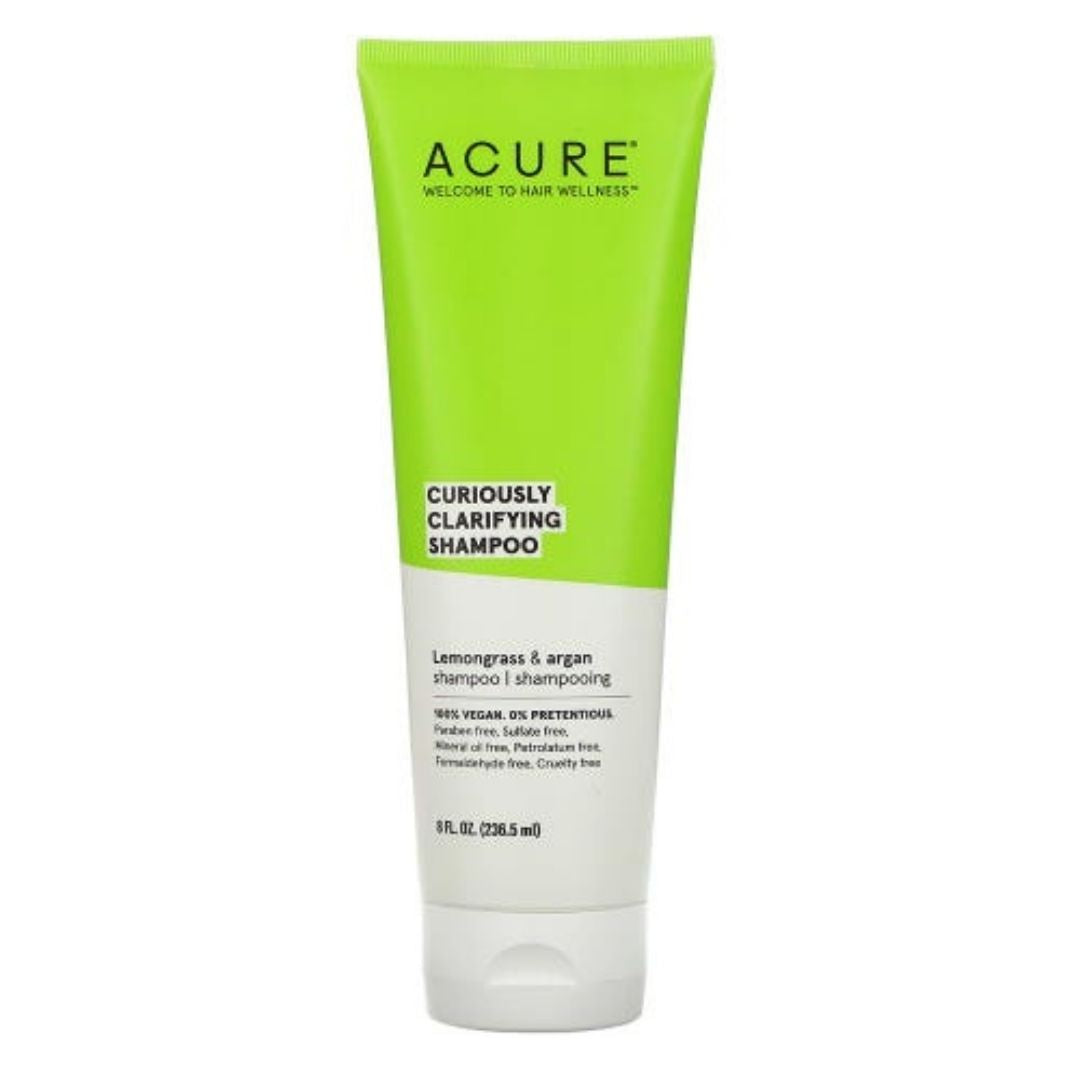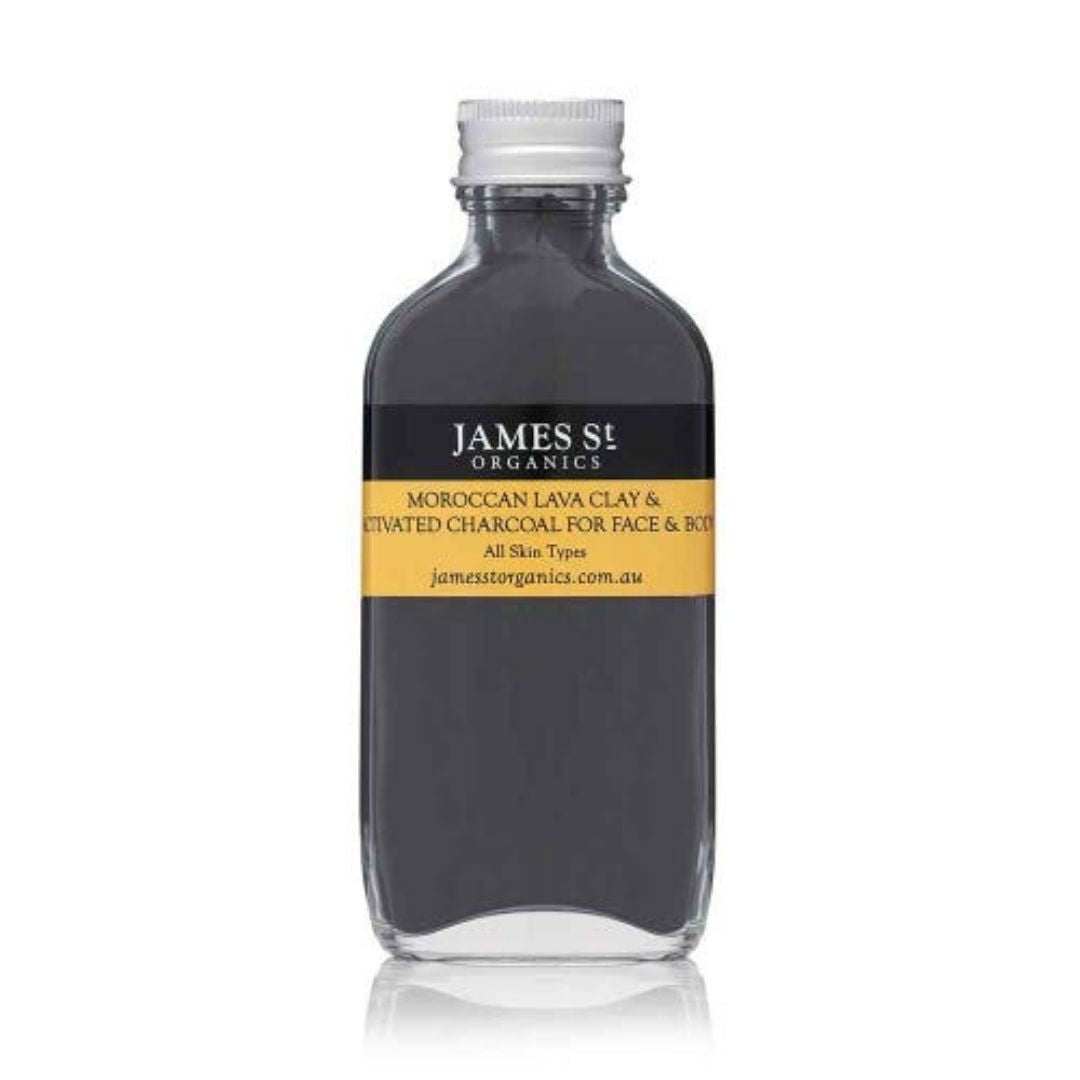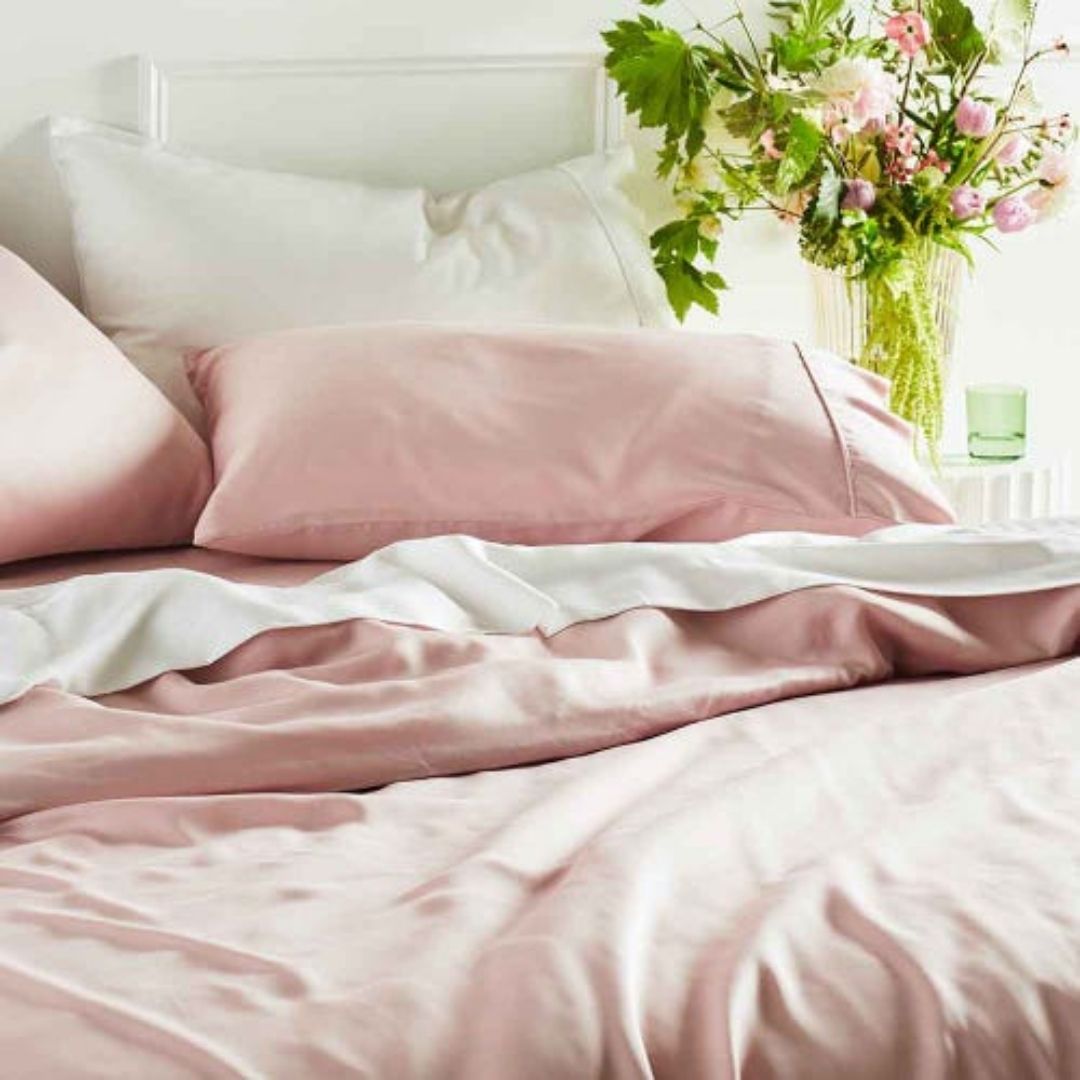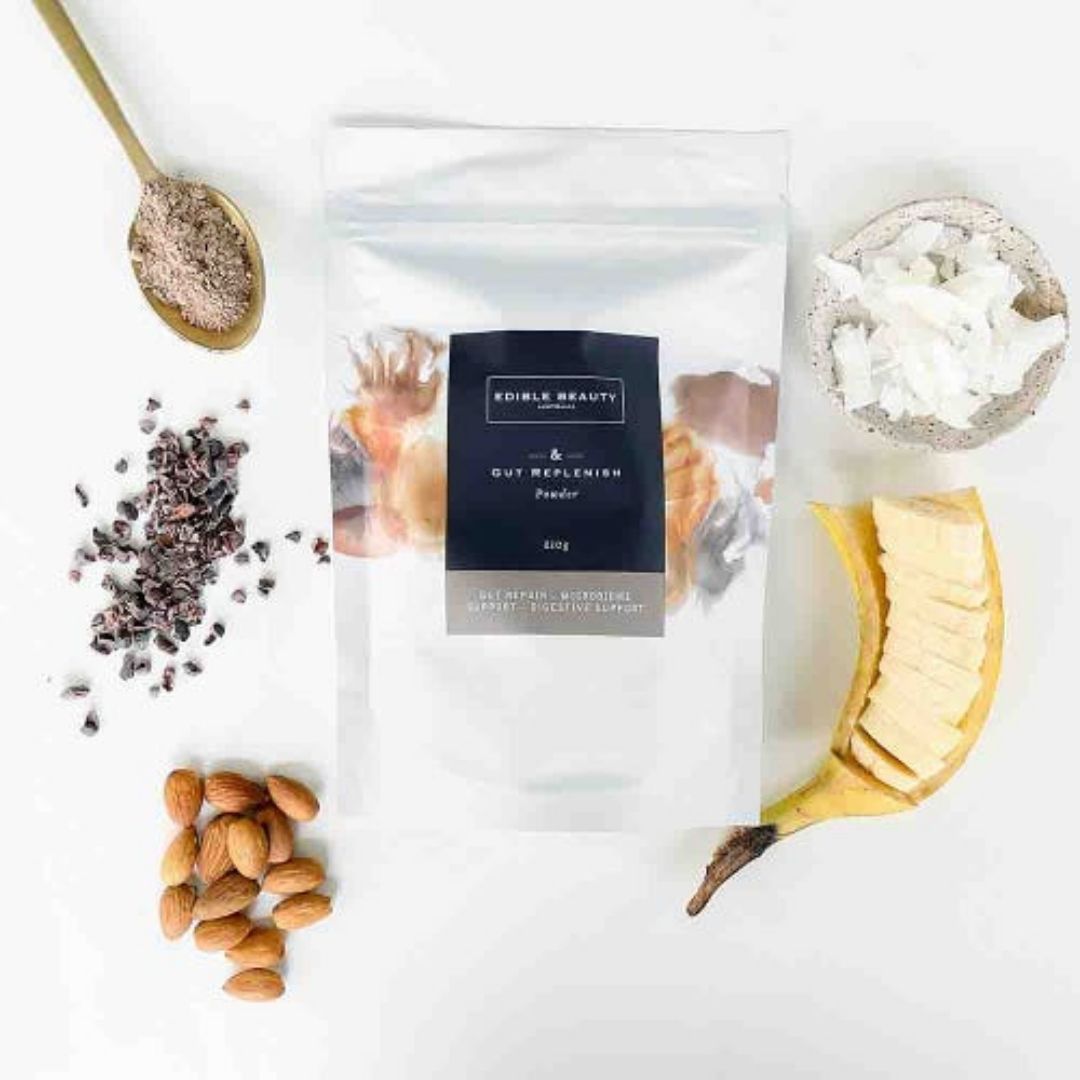Have you ever wondered what your acne is trying to tell you about your inner and outer health?
Let’s face it — acne is super frustrating! Pimples, cysts, nodules, blackheads, whiteheads — we all get them occasionally. If you’re experiencing persistent acne on a particular area of your face, it may be a sign of an internal imbalance or perhaps some lifestyle choices.
Thinking of our face as a “map” can help us to understand the correlation between the location of acne and potential causes/triggers. After all, the skin is an organ, and persistent acne is a tell-tale sign of an imbalance. This imbalance can be caused by internal (hormonal) or external (bacterial) factors.
In this blog, we’ll run through some common causes/triggers of acne in four different areas of the face, plus some tips on how to fix them!
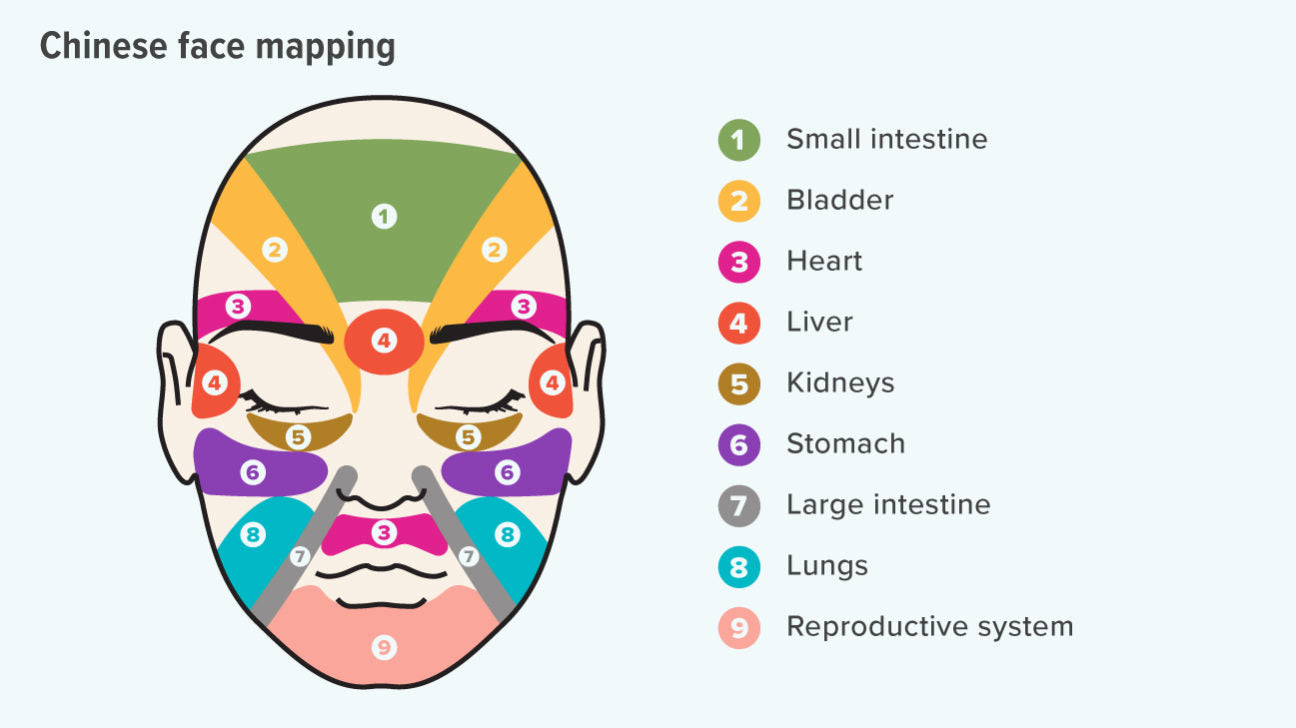

Image: Heathline
Chinese Face Mapping
Skin mapping, or “face reading”, is a 3000-year-old practice in Chinese medicine. It views the face as a map with each section connecting to different organs. Chinese face mapping is extremely useful, but it is not completely grounded in science.
Take a look at the image on the left here.
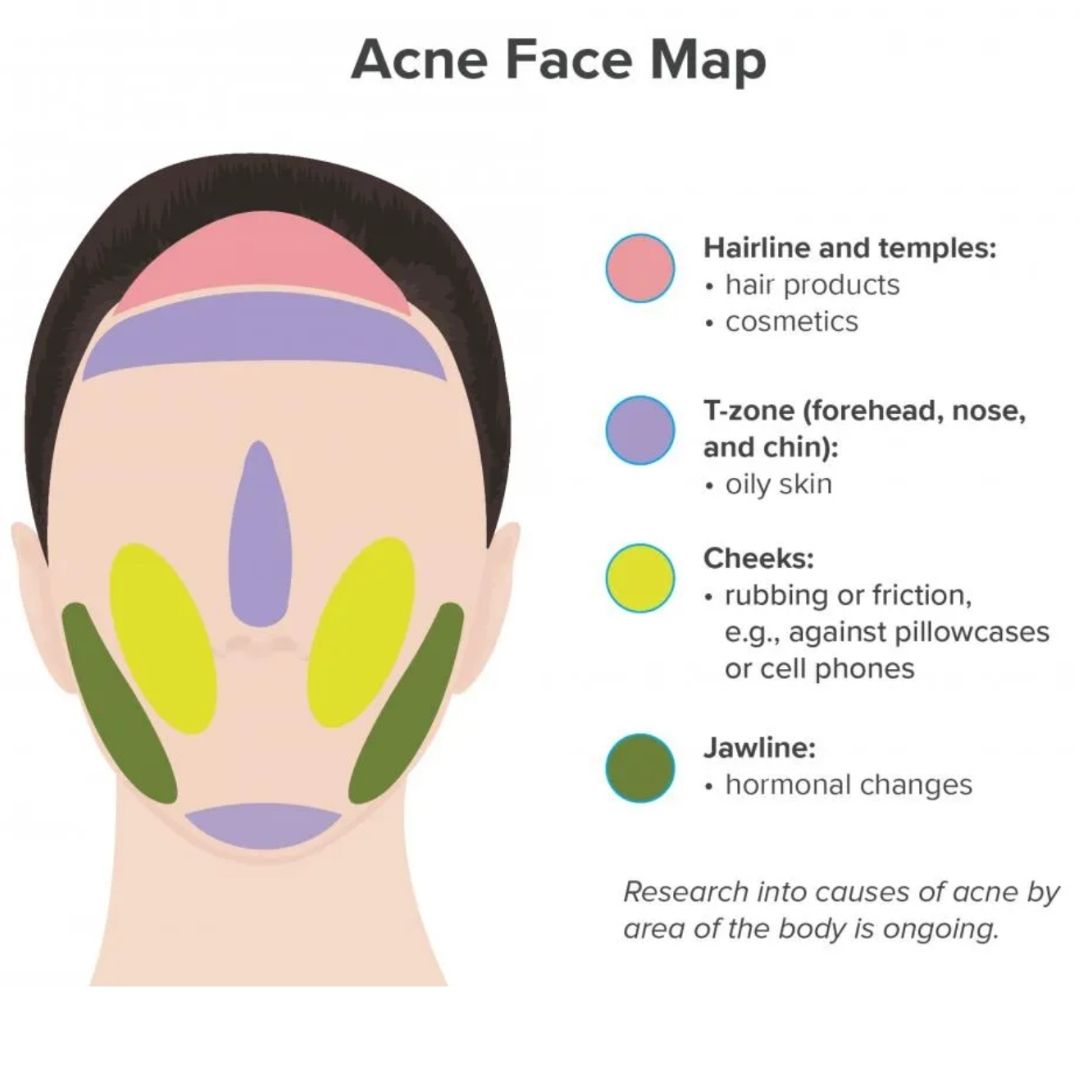

Image: Medical News Today
Modern Acne Face Mapping
Modern acne face maps are based on a mix of modern and traditional knowledge.
In this acne face map we can see hairline and temples, t-zone (forhead, nose and chin), cheeks and the jawline.
Let’s run through each section of the face.
Harline Acne (Temples & Forehead)
Also known as “pomade acne”, this acne is usually caused by a build-up of bacteria from hair products.
If your acne is located around the hairline, one of the best things you can do is use a clarifying shampoo. The Acure Curiously Clarifying Shampoo prevents the build-up of hair products around your hairline, which may help with this type of acne.
It’s also recommended that you stop using oily/waxy hair products made with harsh chemicals! These comedogenic products tend to clog the pores and create acne. Bonus tip: when using Dry Shampoo or Hairspray, use your hand or a towel to shield your skin from the product.
T-Zone (Forehead & Nose)
If you’re experiencing acne on your forehead and around your nose, it’s likely due to oil build-up, stress and fatigue. There is a strong link between oil production and the amount of acne present in the T-zone. Stress and fatigue may also exacerbate oil production!
It’s recommended that you control oil build-up in the T-zone to prevent breakouts. The James St. Organics Lava Clay & Activated Charcoal Mask is excellent for oily skin. This particular mask draws out dirt, grime and toxins — simply pop it on your T-zone and allow it to work its magic! It’s also really important to reduce stress and get enough sleep. Try to recognise certain triggers of stress in your life and change your response to them. We know it’s hard, but prolonged stress and lack of sleep can wreak havoc on our skin.
Cheeks Acne
Cheek acne is likely due to a build-up of bacteria or friction. Persistent acne on your cheeks tends to be due to dirty phones, pillowcases, and other habits like touching your face. If it’s popping up on one side of your face, it could be from your phone.
It’s important that you disinfect your phone regularly! Also, swap out your pillowcases at least once a week.
Jawline & Chin Acne
Lastly, let’s talk about hormonal acne! This type of acne is the most difficult to treat, because it’s mainly caused by hormonal fluctuations. Many of us attempt to treat this acne with topical cleansers, creams and scrubs, but the internal factors must be addressed first.
It’s widely recognised that acne found on the chin and jawline is the result of excess androgens — the male sex hormone. Many of us experience a few breakouts in this area approximately a week before our period starts (annoying, right?). Or, you may experience more acne in this area if you’ve stopped, started or switched birth control pills.
What other factors cause hormonal fluctuations? Well, you’ve probably heard that eating too much chocolate is bad for your skin. Bad news — it’s probably true! Researchers have uncovered a stronger link between diet, gut health and acne.
How To Prevent Jawline & Chin Acne
Monthly breakouts around your menstrual cycle are pretty standard; don’t get too hung up on them. But, if you’re experiencing persistent acne on the chin and jawline (throughout the whole month), you may want to focus on your gut health and get your hormones checked. Poor gut health can actually change your balance of hormones — especially if you’re eating high-carb foods or dairy with added hormones. Take a look at your diet and cut back on sugars, white bread, processed foods, and dairy to help reduce acne. You may also like to try a Low-GI diet.
We love the Edible Beauty Gut Replenish Powder to support good gut health and a healthy microbiome! This delicious powder is packed with superfoods to support the function of digestive enzymes and balance microbial overgrowth.
Do you suffer from acne on a particular area of your face? Skin mapping is a useful tool to identify different causes/triggers of acne on different areas of the face. You can shop all skincare products here.
Of course, we aren't health professionals and suggest that you see your GP or dermatologist to address any major skin issues.
Leave a comment below if you found any of this information helpful!
For more skincare tips, checkout the following blogs:
Ditch The Maskne | 4 Ways To Clear Up Your Skin
